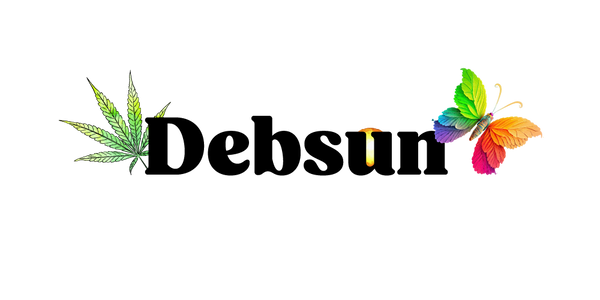
Exploring the Different Types of Alternative Cannabinoids
, 5 min reading time
As the popularity of cannabis products continues to grow, more and more people are becoming interested in exploring the different types of alternative cannabinoids. While many are familiar with THC and CBD, there is a wide variety of other cannabinoids that offer unique benefits and effects. This article will dive into some of the most noteworthy alternative cannabinoids and explore their potential uses and benefits.
As the popularity of cannabis products continues to grow, more and more people are becoming interested in exploring the different types of alternative cannabinoids. While many are familiar with THC and CBD, there is a wide variety of other cannabinoids that offer unique benefits and effects. This article will dive into some of the most noteworthy alternative cannabinoids and explore their potential uses and benefits.
1. CBG (Cannabigerol)
Cannabigerol, or CBG, is often referred to as the "mother cannabinoid" because it is the precursor to many other cannabinoids, including THC and CBD. It is typically found in low concentrations in cannabis plants, making it quite rare. CBG has been the subject of research for its potential anti-inflammatory, antibacterial, and neuroprotective properties. Some users also report that CBG has a calming effect without the psychoactive high associated with THC.
2. CBN (Cannabinol)
Cannabinol, or CBN, is a cannabinoid that is formed when THC is exposed to oxygen and degrades over time. It is most commonly found in aged cannabis products and is known for its potential sedative effects. Many users turn to CBN for its sleep-inducing properties and as a natural alternative to traditional sleep aids. Additionally, CBN has shown promise in relieving pain and reducing inflammation.
3. CBC (Cannabichromene)
Cannabichromene, or CBC, is a non-psychoactive cannabinoid that has gained attention for its potential to combat pain and inflammation. CBC is often found in combination with other cannabinoids, working synergistically to enhance their effects. Some studies suggest that CBC may also have antidepressant and anti-anxiety properties, making it a promising option for individuals seeking natural relief from mood disorders.
4. THCV (Tetrahydrocannabivarin)
Tetrahydrocannabivarin, or THCV, is a unique cannabinoid that is structurally similar to THC but offers a different range of effects. While THC is known for its psychoactive properties, THCV has shown potential as an appetite suppressant and weight loss aid. Additionally, THCV may have anticonvulsant properties, making it a possible treatment option for individuals with epilepsy.
5. Delta-8-THC (Delta-8-Tetrahydrocannabinol)
Delta-8-THC is a cannabinoid that is chemically similar to delta-9-THC, the main psychoactive component of cannabis. However, delta-8-THC is reported to have a smoother and milder psychoactive effect compared to delta-9-THC. Some users have found that delta-8-THC offers a more relaxed and focused high, without the anxiety and paranoia that can be associated with higher concentrations of delta-9-THC.
6. THCA (Tetrahydrocannabinolic Acid)
Tetrahydrocannabinolic acid, or THCA, is the precursor to THC and is found in raw cannabis plants. When heated, THCA decarboxylates and converts to THC, becoming psychoactive. However, THCA itself is non-psychoactive and is often used for its potential anti-inflammatory and neuroprotective properties. Some individuals incorporate THCA into their wellness routines to support overall health and well-being.
7. Delta-10-THC (Delta-10-Tetrahydrocannabinol)
Delta-10-THC is a lesser-known cannabinoid gaining attention for its uplifting and energetic effects. Similar to delta-8-THC, delta-10-THC offers a milder psychoactive effect than delta-9-THC. Some users report that delta-10-THC provides an enhanced focus and creativity, making it a potential option for individuals looking for a productive and energizing cannabis experience.
8. CBDV (Cannabidivarin)
Cannabidivarin, or CBDV, is a non-psychoactive cannabinoid that is structurally similar to CBD. CBDV has shown potential in the treatment of epilepsy, with some studies suggesting that it may help reduce the frequency and severity of seizures. Additionally, CBDV has been explored for its potential anti-nausea, anti-inflammatory, and anti-anxiety properties.
9. CBDA (Cannabidiolic Acid)
Cannabidiolic acid, or CBDA, is the precursor to CBD and is found in raw cannabis plants. Like THCA, CBDA is non-psychoactive but offers potential therapeutic effects. CBDA has been the subject of research for its potential anti-inflammatory, antiemetic, and anticancer properties. Some users incorporate CBDA into their wellness routines to support overall health and promote a sense of balance.
10. CBGA (Cannabigerolic Acid)
Cannabigerolic acid, or CBGA, is the precursor to both THC and CBD and is found in raw cannabis plants. While CBGA itself is not widely studied, it plays a crucial role in synthesizing other cannabinoids. Some experts believe that CBGA may have potential therapeutic properties and that further research is needed to understand its full range of effects.
11. CBDP (Cannabidiphorol)
Cannabidiphorol, or CBDP, is a lesser-known cannabinoid that is still being researched. While there is limited information available on CBDP, early studies suggest that it may have potential anti-inflammatory properties. As research continues to unfold, we may learn more about the potential benefits of CBDP and its role in the cannabis plant.
12. CBGV (Cannabigerivarin)
Cannabigerivarin, or CBGV, is a non-psychoactive cannabinoid that is structurally similar to CBG. CBGV has shown potential in the treatment of inflammatory bowel disease, with some studies suggesting that it may help reduce inflammation in the gut. Additionally, CBGV has been studied for its potential antimicrobial and neuroprotective properties.
Final Thoughts
Exploring the different types of alternative cannabinoids can be an intriguing journey for cannabis enthusiasts seeking unique effects and potential health benefits. While THC and CBD may be the most well-known cannabinoids, these alternative compounds offer a diverse range of properties that can cater to individual preferences and needs.
Remember, it's essential to do your own research and consult with medical professionals before incorporating any new cannabinoids into your wellness routine. Each person's experience with cannabinoids may vary, so it's essential to start with low doses and monitor your body's response.
Ultimately, the world of alternative cannabinoids is vast, and there is still much to learn about their potential benefits. As research continues and new discoveries are made, we can expect to see even more exciting advancements in the field of cannabis science.
